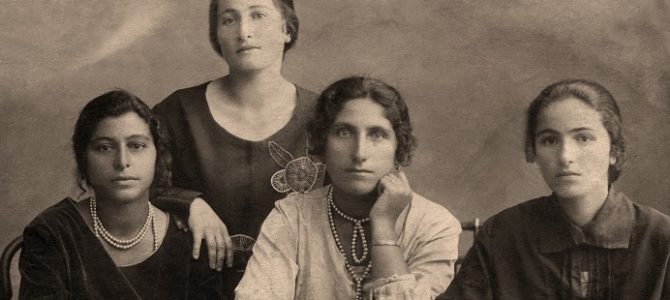
The historian Ilja Lempertas said: “There was not a Jewish Holocaust and there was not a Roma Holocaust. There was one Holocaust. It began when back before the war all the efforts of one country were concentrated for exterminating people of other ethnicities.”
There is an abundant literature testifying to the Jewish experience of the Holocaust, but much less about the Roma experience. Materials collected by V. Beinortienė ir D. Tumasonytė from Roma survivors of the concentration camps and their families, including photographs and archival documents, will fill that gap partially.
With permission of the authors, we present some excerpts from Beinortienė and Tumasonytė’s book “Exploring the Untold Suffering of the Roma People of Panevėžys: 1941–1945.”
Excerpts from Šiauliai University Dr. Rolandas Paulauskas’s article in the book “The Roma Holocaust: Unread Pages from the History of the Roma”:
“In the Auschwitz camp the Roma lived separately from other prisoners, and wore a black or brown inverted triangle with the letter Z (for Zigeuner, German for Gypsy). The black triangle meant anti-social, and the brown meant a person of Roma ethnicity. …
“Historians say many Roma died in different experiments. One of the most infamous figures in the history of medicine is the doctor Josef Mengele, who worked at the Auschwitz concentration camp. The ‘scope’ of his work was quite broad, from amputation of limbs to all sorts of chemical experiments on people. According to testimonies by eye-witnesses, doctor Mengele especially liked Roma children. In one experiment he sewed together the backs of two four-year-old Roma girls to make them into Siamese twins. The parents, unable to bear the suffering of the girls, somehow managed to get enough morphine to ‘put them to sleep.’ …
“Nazi doctors in 1944 wanted to see how the human organism tolerated sea water and conducted long-term experiments involving 44 Roma at the Buchenwald concentration camp. The human guinea pigs were only allowed to drink sea water. They became exhausted, incoherent and almost died. … In 1945 doctor Karl Klauberg sterilized 8-10-year-old Roma girls without anaesthetic. All the girls remained physically disfigured and several died within days. …
“The Roma Holocaust is more difficult to demonstrate because of the lack of written sources and documents due to their lower literacy rate. In Lithuania, for example, Roma men on average have finished the fifth grade, and Roma women the fourth. About 18 percent of men and 35 percent of women are completely illiterate. Literacy was even lowed during World War II. …
“More recently many European countries have tried at least partially to compensate for the discrimination and other societal oppressions suffered by the Roma. Noteworthy was when the West German parliament in 1979 recognized the persecution of the Roma had been an expression of genocide, and created conditions for Roma who had suffered in the Holocaust to receive material compensation. … On April 15, 2015, the European Parliament adopted a resolution on the Holocaust of the Roma during World War II and pledged to continue to fight against this kind of discrimination.”
Entire article in Lithuanian here.
Material prepared as part of the project “Preparing and Publicizing Recommendations for Actions to Fight Anti-Semitism and Romophobia in Lithuania.”
#AtmintisAtsakomybeAteitis
Project supported by


